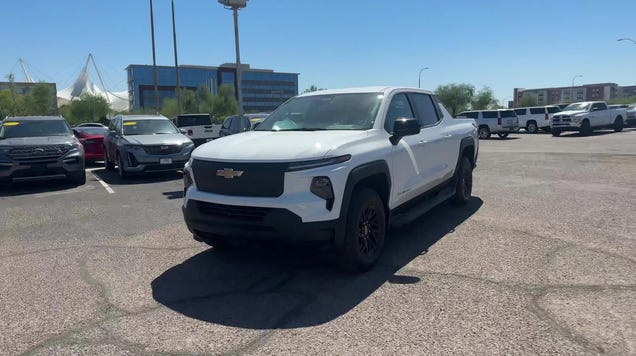Understanding GM’s Electric Vehicle Strategy and Market Performance
The automotive industry is undergoing a significant transformation, with electric vehicles (EVs) at the forefront of this change. General Motors (GM), a long-standing player in the market, is making strides in its EV rollout, though the journey has not been without challenges. This article delves into GM’s current EV performance, its strategic direction, and the implications for consumers and the industry at large.
Evaluating GM’s EV Sales Performance
In the second quarter of this year, GM reported a notable increase in its electric vehicle sales, moving nearly 38,000 units across its Cadillac, Chevy, and GMC brands. This figure, while promising, reflects a gradual acceleration in GM’s transition to electric mobility. The Chevy Silverado EV, one of the standout models in GM’s lineup, has garnered attention for its innovative features and capabilities.
However, the sales figures also highlight a broader trend in the EV market: the pace of adoption is uneven. Despite the increase in sales, GM has had to adjust its production targets, cutting them by 50,000 vehicles. This adjustment raises questions about the company’s ability to meet consumer demand and compete effectively in a rapidly evolving market.
The Role of Fleet Sales in GM’s Strategy
Fleet sales have emerged as a significant component of GM’s EV strategy, with companies like Hertz purchasing vehicles to integrate into their rental offerings. However, Hertz’s recent decision to divest from a substantial number of its electric vehicles underscores the volatility in the rental market. The company is reportedly looking to sell off 20,000 EVs, which raises concerns about the long-term viability of EVs in fleet applications.
This situation presents a dual challenge for GM: while fleet sales can provide a steady revenue stream, the fluctuating demand from rental companies could impact production planning and inventory management. GM must navigate these complexities to ensure that its fleet partnerships remain beneficial and sustainable.
Consumer Insights and Market Trends
For consumers considering an electric vehicle, GM’s current offerings present both opportunities and challenges. The Silverado EV, for example, is designed to appeal to traditional truck buyers who may be hesitant to switch to electric. Its robust performance, advanced technology, and familiar design language aim to bridge the gap between conventional and electric vehicles.
However, potential buyers should remain aware of the broader market dynamics. The EV landscape is becoming increasingly competitive, with new entrants and established brands alike vying for market share. Consumers may benefit from researching various models, understanding the total cost of ownership, and considering factors such as charging infrastructure and resale value.
The Future of GM’s Electric Vehicle Initiative
Looking ahead, GM’s commitment to electric vehicles is clear, but the path forward will require strategic adjustments. The company has set ambitious goals for electrification, aiming to become a leader in the EV space. To achieve this, GM will need to enhance its production capabilities, invest in battery technology, and expand its charging network.
Moreover, consumer education will play a crucial role in the adoption of EVs. As more individuals become aware of the benefits of electric vehicles—such as lower operating costs and reduced environmental impact—demand is likely to increase. GM’s ability to communicate these advantages effectively will be essential in driving consumer interest and acceptance.
In summary, GM’s journey in the electric vehicle market is a reflection of both the challenges and opportunities present in the industry. As the company navigates its sales performance, fleet partnerships, and consumer perceptions, it remains poised to play a pivotal role in shaping the future of electric mobility. By focusing on innovation, sustainability, and consumer engagement, GM can solidify its position as a leader in the evolving automotive landscape.

